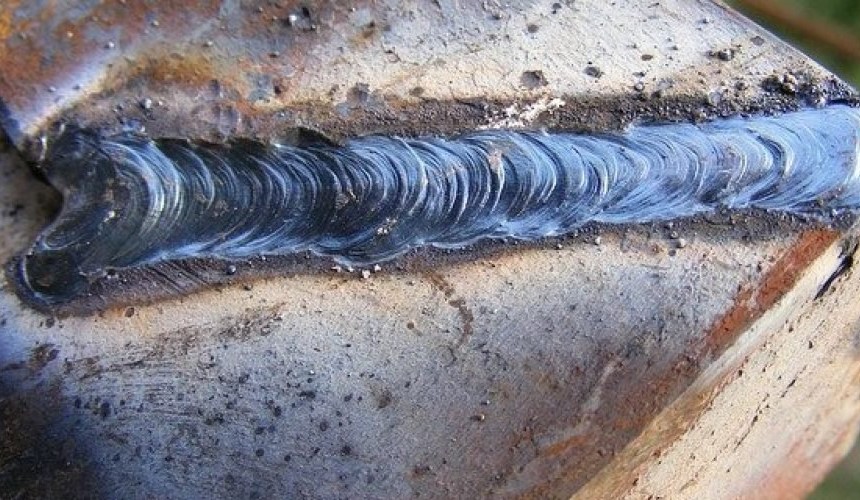Step-by-Step Guide to Preventing Weld Undercut in Different Metals
Step-by-Step Guide to Preventing Weld Undercut in Different Metals
Blog Article
Mastering the Art of Welding: Just How to Stay Clear Of Undercut Welding Issues for Flawless Construction Results
Efficiency and precision are paramount on the planet of welding, where even the least blemish can jeopardize the architectural integrity of a made item. One typical challenge that welders face is undercutting, a problem that can lead and weaken a weld joint to costly rework. By understanding the source of undercut welding and executing reliable techniques to avoid it, welders can boost their craft to brand-new levels of excellence (Preventing weld undercut). In the quest of flawless construction results, understanding the art of welding to stay clear of undercut concerns is not just an ability yet a necessity for those pursuing excellence in their job.
Comprehending Undercut Welding

To avoid undercut welding, welders must ensure appropriate welding criteria, such as readjusting the existing, voltage, traveling rate, and keeping the appropriate electrode angle. Furthermore, using the appropriate welding method for the details joint setup is essential. Employing weaving activities or backstepping techniques can aid make sure appropriate weld steel deposition and lower the probability of undercut formation. Regular examination of welds during and after the welding process is also vital to catch any kind of undercut early and make essential changes to stop more defects. Preventing weld undercut. By recognizing the reasons of undercut welding and carrying out safety nets, welders can accomplish high-grade, structurally sound welds.
Reasons For Undercut in Welding
Comprehending the factors that contribute to damage in welding is necessary for welders to generate high-grade, structurally sound welds. When the weld steel does not appropriately fill up the groove developed in between the base steel and the formerly transferred weld metal, damaging takes place. A number of variables can lead to damage in welding. One common cause is excessive warm input. Welding at high temperatures for prolonged durations can result in the base steel thawing even more than preferred, causing undercut. Insufficient welding incorrect or existing welding speed can additionally add to undercut. Inadequate current may not give sufficient warm to thaw the base and filler metals appropriately, while too much speed can avoid proper combination, causing undercut. Furthermore, inappropriate electrode angles or inaccurate torch adjustment strategies can develop areas of low weld metal deposition, advertising undercut. Recognizing these reasons and applying proper welding techniques can help protect against damaging problems, making certain long lasting and solid welds.
Techniques to stop Undercutting

To minimize the threat of undercutting in welding, welders can utilize strategic welding techniques focused on enhancing the quality and stability of the weld joints. One effective approach is Find Out More to adjust the welding parameters, such as voltage, existing, and travel rate, to guarantee proper warm input and deposition. Preserving an ideal electrode angle and guaranteeing consistent travel speed can likewise aid protect against undercut. Furthermore, making use of the correct welding technique for the specific joint configuration, such as weave or stringer grains, can add to minimizing undercutting. Preventing weld undercut.
Furthermore, correct joint preparation, consisting of guaranteeing tidy base products without contaminants and utilizing the proper welding consumables, is essential in protecting against undercut issues. Using back-step welding methods and regulating the weld bead profile can likewise aid distribute warm uniformly and reduce the threat of undercut. Regular inspection of the weld joint during and after welding, as well as applying top quality assurance procedures, can assist in resolving and finding undercutting problems without delay. By executing these methods vigilantly, welders can attain remarkable manufacture results with very little undercut problems.
Relevance of Correct Welding Parameters
Choosing and maintaining proper welding specifications is vital for achieving effective welds with marginal special info issues. Welding parameters describe variables such as voltage, current, take a trip speed, electrode angle, and shielding gas circulation rate that straight affect the welding process. These specifications have to be very carefully changed based upon the kind of product being welded, its thickness, and the welding method employed.
Appropriate welding parameters make certain the correct amount of warmth is applied to thaw the base metals and filler product uniformly. If the specifications are established expensive, it can cause too much warmth input, triggering burn-through, spatter, or distortion. On the various other hand, if the criteria are as well reduced, insufficient combination, absence of infiltration, or undercutting may take place.
High Quality Guarantee in Welding Procedures

Final Thought
To conclude, mastering the art of welding needs a detailed understanding of undercut welding, its causes, and methods to avoid it. By making certain correct welding criteria i was reading this and executing quality control methods, flawless fabrication outcomes can be attained. It is crucial for welders to constantly pursue quality in their welding procedures to prevent undercut problems and create high-quality welds.
Undercut welding, a typical issue in welding processes, occurs when the weld metal does not properly fill up the groove and leaves a groove or anxiety along the welded joint.To avoid undercut welding, welders should guarantee proper welding criteria, such as readjusting the present, voltage, travel rate, and preserving the proper electrode angle. Poor welding present or incorrect welding rate can also contribute to undercut.To reduce the risk of undercutting in welding, welders can use calculated welding strategies aimed at boosting the high quality and stability of the weld joints.In final thought, grasping the art of welding calls for a comprehensive understanding of undercut welding, its reasons, and methods to stop it.
Report this page